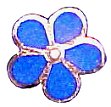A Masonic Myth
 I was watching the recent documentaries about Freemasonry on The History Channel. I had saved them on my DVR and spent my Sunday rest time watching these shows, energized and informed by their content rather than napping. There were a few small nitpicks here and there, but in general it was meticulously researched and well presented. They even had some modern experts in Masonic history like S. Brent Morris and Stephen Bullock. Some years ago, I had a chance to see Bullock speak at the Maine Historical Society about his book "Revolutionary Brotherhood" (do buy it!). He is a great speaker and good with hard questions.
I was watching the recent documentaries about Freemasonry on The History Channel. I had saved them on my DVR and spent my Sunday rest time watching these shows, energized and informed by their content rather than napping. There were a few small nitpicks here and there, but in general it was meticulously researched and well presented. They even had some modern experts in Masonic history like S. Brent Morris and Stephen Bullock. Some years ago, I had a chance to see Bullock speak at the Maine Historical Society about his book "Revolutionary Brotherhood" (do buy it!). He is a great speaker and good with hard questions.I tend to harbor a fair bit of doubt when it comes to documentaries be they film ('history writ with lightning') or television. This was no exception. While researching items like the relationship between Albert Pike and the Klan (who knows what to think about that), I ran across some material which broke my heart. I, like most Freemasons in Maine, am well aware of the story of the blue forget-me-not. This little blue flower, in the form of a pin, was worn by Freemasons during the Nazi period in Germany as a way to hide their Masonic affilitation from the government. The tradtional history holds that Freemasons were persecuted by the government and even sent to the camps. My wife did her thesis on Nazi persecutions, with her focus being homosexual Jews, and ran across material about Freemasons being a target of the regime. I had never been interested enough to read more about this element of Masonic history, devoting most of my time to learning Masonic ritual and reading about its development.
There I was reading about Albert Pike and the Klan when I came across two papers from Alain Bernheim. I will not summarize the material for you, asking instead that you read them for yourself:
- The "Forget-me-not" Pin and Freemasonry by Paul Bessel (a summary of the traditional and newly realized history)
- German Freemasonry and Its Attitudes Toward the Nazi Regime by Alain Bernheim
- "The Blue Forget-Me-Not" Another Side of the Story by Alain Bernheim
Labels: Freemasonry, Maine



